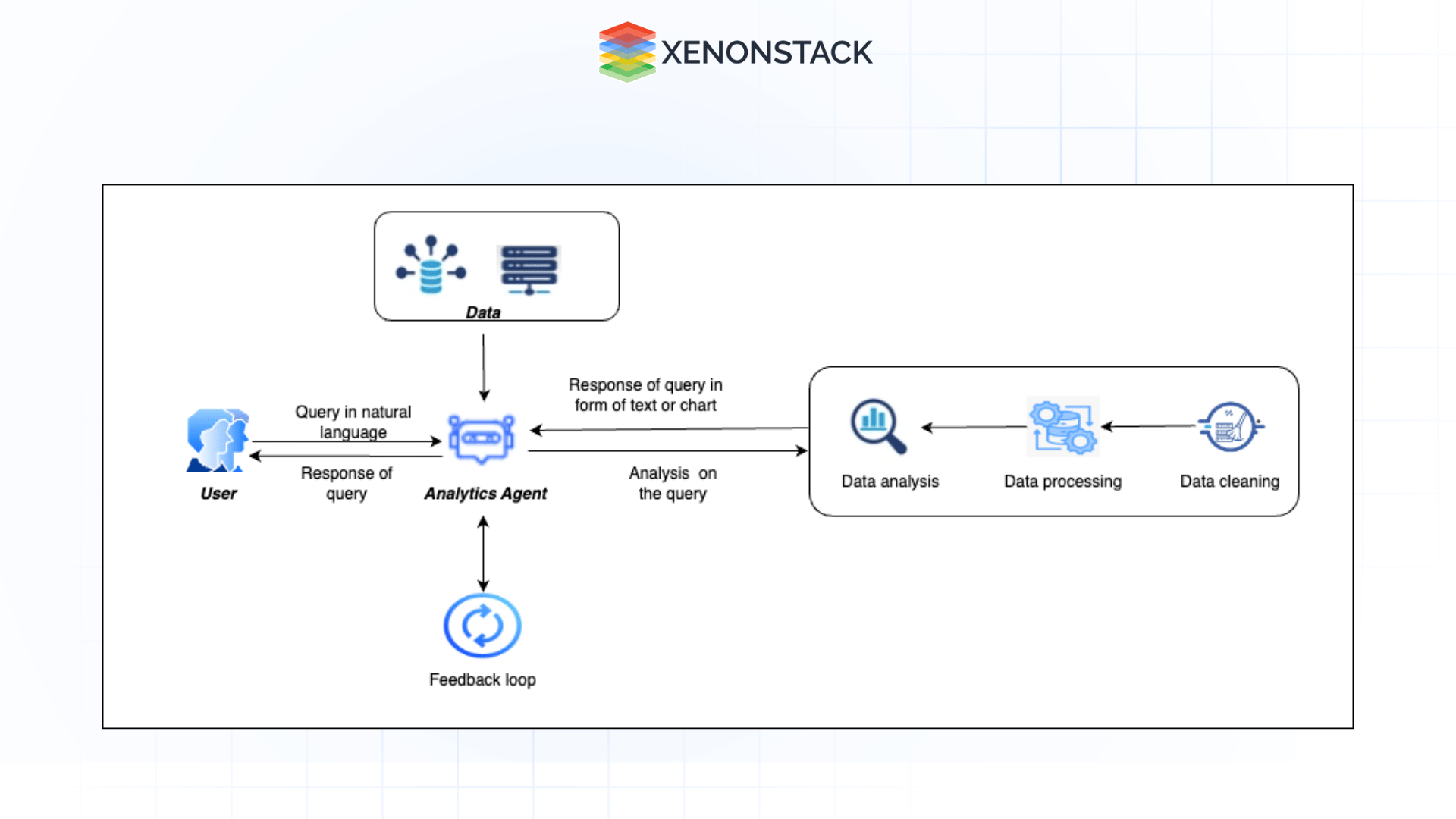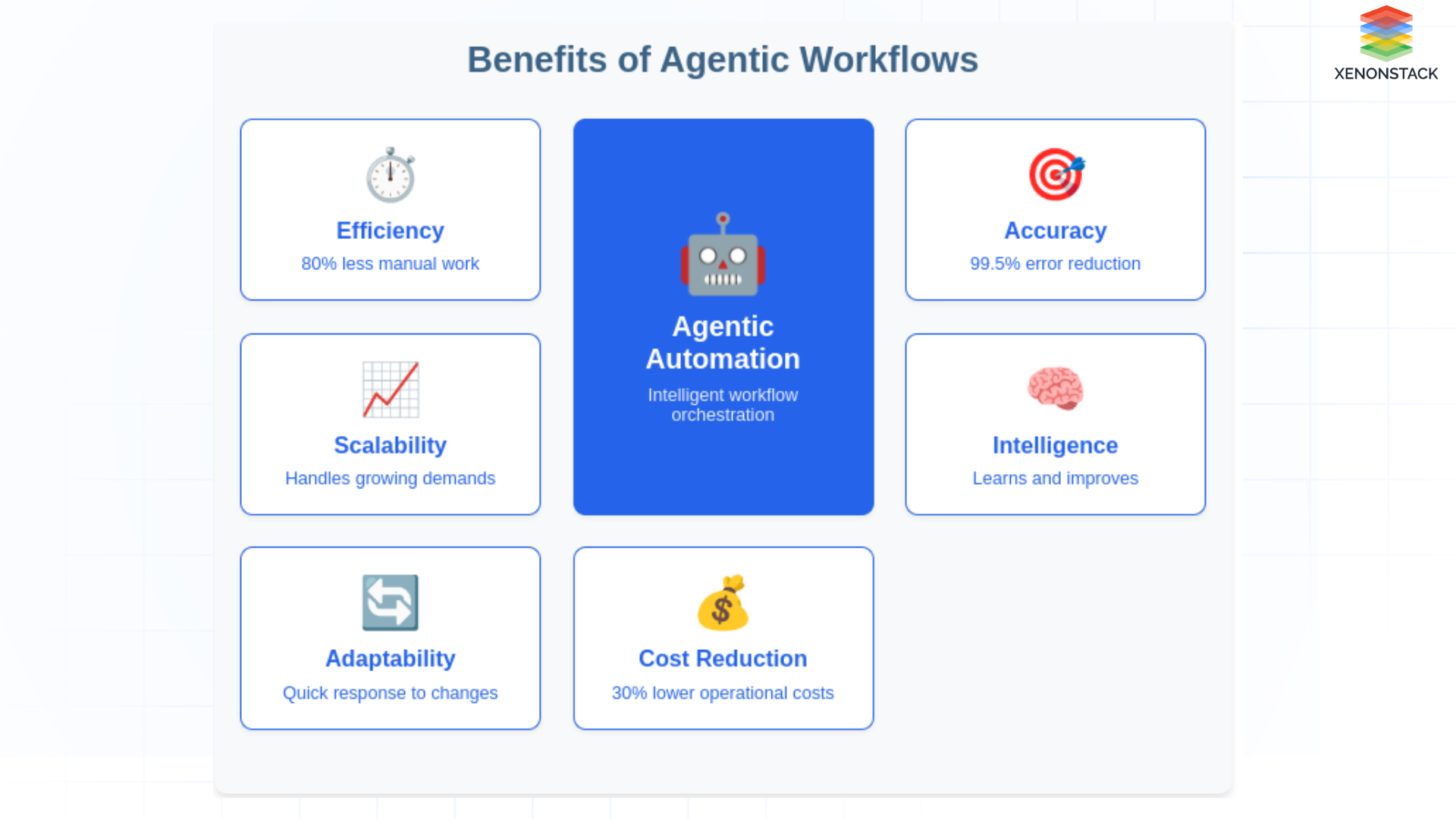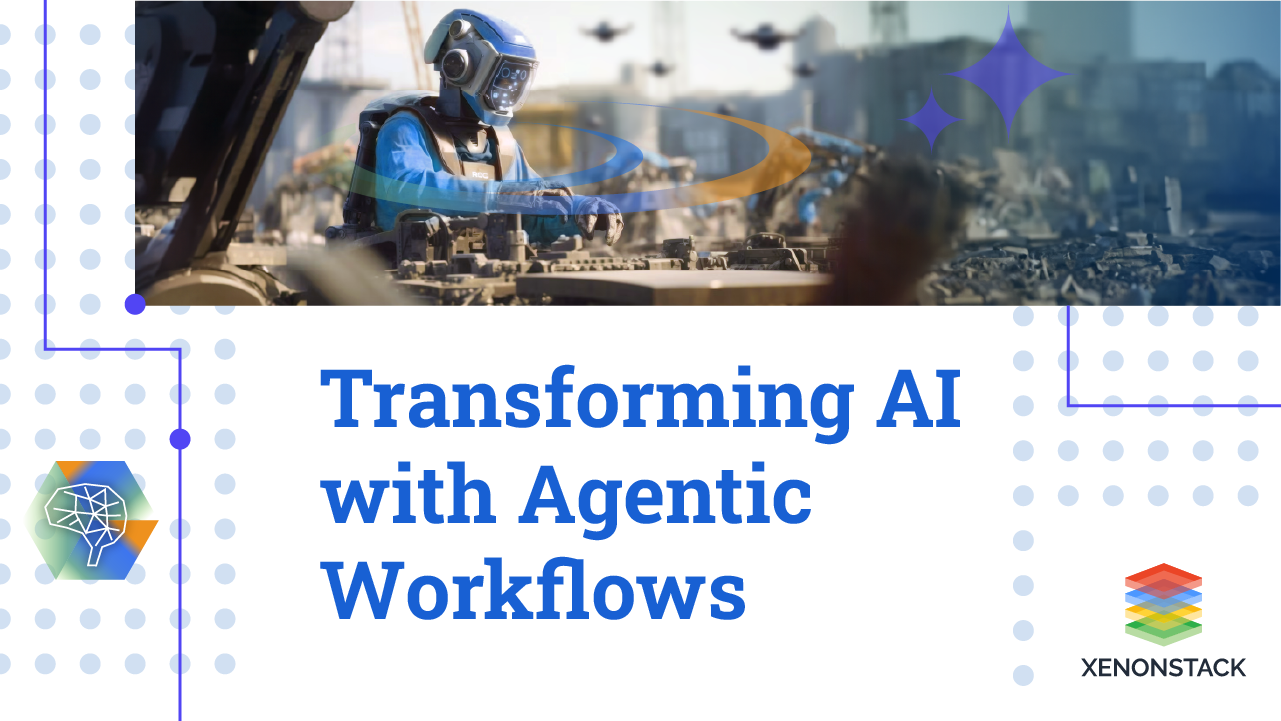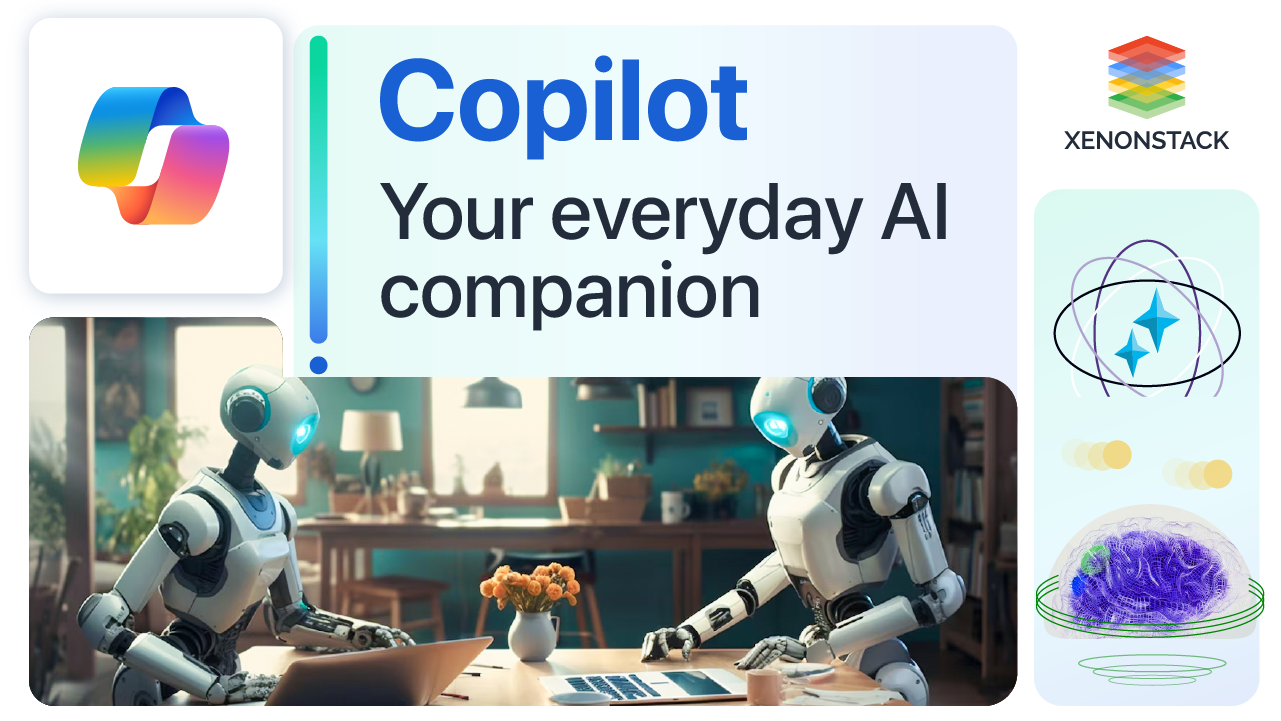
Agentic workflows represent a transformative leap in business automation, leveraging AI to carry out tasks traditionally handled by humans autonomously. They combine various technologies—machine learning, natural language processing (NLP), and agentic process automation (APA)—to streamline processes, reduce manual intervention, and enhance operational efficiency.
One of the most exciting developments in this space is the rise of Agentic Workflows, a revolutionary concept that integrates AI to automate tasks, improve decision-making, and enhance productivity. In this blog, we will explore agentic workflows, the technologies that power them, their benefits, real-world use cases, and the challenges they present.
What are Agentic Workflows?
At their core, agentic workflows are AI-powered systems that autonomously carry out tasks typically performed by humans. These workflows leverage various AI technologies, including machine learning, natural language processing (NLP), and agentic process automation (APA), to mimic human decision-making processes. Unlike traditional workflows that require constant human oversight and intervention, agentic workflows use data-driven insights to make real-time decisions, improving speed, efficiency, and accuracy.
 Fig 1: Agentic Workflows
Fig 1: Agentic WorkflowsThe Evolution of Workflows
Traditional business workflows often involve a linear process where employees carry out tasks, passing work from one individual to another. While this method works well in predictable, rule-based tasks, it becomes cumbersome when the complexity of operations increases. With agentic workflows, AI can take over routine tasks, automate decision-making, and adjust processes based on new data. This shift is part of a broader trend toward Intelligent Automation, where AI technologies enhance human capabilities rather than replace them.
Key Technologies Behind Agentic Workflows
The power of agentic workflows lies in the technologies that drive them. The three most essential technologies at play are Machine Learning (ML), Natural Language Processing (NLP), and Agentic Process Automation (APA). Let’s take a closer look at each.
-
Machine Learning (ML)
Machine learning, a subset of AI, enables systems to learn from data and improve over time. ML algorithms analyze large datasets in agentic workflows to identify patterns and make predictions. This allows workflows to evolve autonomously, adjusting their actions based on previous outcomes. Over time, machine learning can enhance the accuracy and efficiency of workflows, making them smarter and more adaptable. -
Natural Language Processing (NLP)
NLP allows machines to understand and generate human language. This is particularly important in workflows that involve communication with customers or employees. For instance, in customer service applications, NLP enables AI systems to interpret and respond to customer inquiries in natural language, effectively replacing the need for human agents. By integrating NLP, agentic workflows can provide personalized responses and handle complex queries. -
Agentic Process Automation (APA)
RPA is a technology that automates repetitive, rule-based tasks that require human interaction with digital systems. For example, an RPA bot might extract data from one system, input it into another, or trigger a series of actions based on predefined conditions. In the context of agentic workflows, RPA handles the execution of routine tasks, freeing up human workers to focus on more strategic activities.
These technologies combine to create faster, more efficient workflows and are capable of handling more complex tasks, offering significant improvements in business operations.
The Benefits of Agentic Workflows
Agentic workflows bring many benefits to businesses, transforming how operations are carried out. Below, we explore the primary advantages of integrating agentic workflows into business processes.
 Fig 2: Benefits of Agentic Workflow
Fig 2: Benefits of Agentic Workflow1. Enhanced Efficiency and Speed
One of the most significant advantages of agentic workflows is increased operational efficiency. Businesses can handle more work with fewer resources by automating repetitive and time-consuming tasks. AI systems can operate 24/7, processing data and making decisions faster than any human could. This enhanced speed allows businesses to respond more effectively to customer needs, market changes, and operational challenges.
2. Reduced Errors and Increased Accuracy
Manual processes are prone to errors due to fatigue, oversight, or miscommunication. Agentic workflows significantly reduce the risk of human error. Since AI systems follow predefined rules and make decisions based on data, the likelihood of mistakes is minimized. This increase in accuracy improves operational reliability and builds trust with customers and stakeholders.
3. Cost Savings
The automation of routine tasks leads to substantial cost savings for businesses. By reducing the need for human intervention, companies can lower labor costs and minimize the risk of errors that might lead to financial losses. Furthermore, agentic workflows can scale effortlessly, allowing businesses to grow without a proportional increase in operational costs.
4. Scalability
As businesses expand, the volume of work increases, which can overwhelm human employees. Agentic workflows, however, can scale easily without additional resources. AI systems can handle an increasing volume of tasks, allowing businesses to grow efficiently without sacrificing performance.
5. Greater Agility
Adapting quickly to changing circumstances is crucial in today’s fast-paced business environment. Agentic workflows can react to new data in real time, adjusting processes and decisions based on emerging trends or disruptions. This agility allows businesses to stay ahead of competitors and respond promptly to market demands.
Use Cases of Agentic Workflows
The application of agentic workflows is broad, and businesses across various sectors are adopting these technologies to enhance their operations. Below are some of the most common use cases where agentic workflows are making an impact.
1. Customer Service Automation
In customer service, agentic workflows revolutionise how businesses interact with their customers. AI-powered chatbots and virtual assistants use natural language processing (NLP) to understand customer inquiries and provide real-time responses. These systems can resolve common issues, answer frequently asked questions, and make product recommendations. By handling these tasks autonomously, agentic workflows allow human agents to focus on more complex cases.
2. Human Resources (HR) Automation
Human resources departments can significantly benefit from agentic workflows. Assume screening, interview scheduling, and team member onboarding can be automated using AI. For example, AI systems can scan resumes, match them with job descriptions, and automatically schedule interviews with the most qualified candidates. This reduces the time HR teams spend on administrative tasks and allows them to focus on more strategic activities, such as talent development.
3. IT Operations and Incident Management
Agentic workflows in IT operations can automatically detect system issues, diagnose problems, and even resolve them without human intervention. This level of automation reduces downtime, ensures smooth operations, and frees IT personnel to focus on higher-level tasks such as system optimization and security. Businesses can achieve excellent reliability and efficiency by using AI to monitor and manage IT systems.
4. Financial Processes
AI workflows are increasingly used in financial processes such as fraud detection, risk management, and transaction monitoring. AI systems can analyze vast amounts of financial data in real time, flag suspicious activity, identify patterns, and make decisions to prevent fraud or mitigate risks. Financial institutions can improve accuracy, reduce fraud, and enhance compliance by automating these processes.
Challenges in Implementing Agentic Workflows
While agentic workflows offer many benefits, they are not without their challenges. Some of the key hurdles include:
-
Data Privacy and Security:
Since agentic workflows rely on vast amounts of data to make decisions, protecting sensitive information is crucial. Organizations must implement robust data privacy and security measures to prevent breaches and maintain customer trust. -
Integration with Legacy Systems:
Many businesses still rely on legacy systems that are not designed to work with modern AI technologies. Integrating agentic workflows with these older systems can be complex and time-consuming, requiring significant investment in time and resources. -
Skill Gap:
Implementing and managing agentic workflows requires specialized knowledge in AI, machine learning, and automation technologies. Businesses may face challenges in acquiring or developing the necessary skills within their workforce. -
Bias in AI Models:
AI systems are only as good as the data they are trained on. If the training data contains biases, AI systems can make biased decisions. Organizations must ensure their AI models are trained on diverse, representative datasets to avoid unintended consequences.
Future Trends of Agentic Workflow
Agentic workflows represent the future of business automation, allowing organisations to automate complex tasks, enhance decision-making, and improve overall efficiency. Businesses can streamline operations, reduce errors, and lower costs by leveraging AI technologies such as machine learning, NLP, and APA. However, challenges such as data privacy, integration with legacy systems, and skill gaps must be addressed for successful implementation.
As AI advances, the potential of agentic workflows will only grow, reshaping industries and driving innovation across various sectors. Companies that embrace this technology early will be better positioned to thrive in the increasingly competitive digital landscape.
Next Steps with Agentic Workflow
Talk to our experts about implementing compound AI system, How Industries and different departments use Agentic Workflows and Decision Intelligence to Become Decision Centric. Utilizes AI to automate and optimize IT support and operations, improving efficiency and responsiveness.



